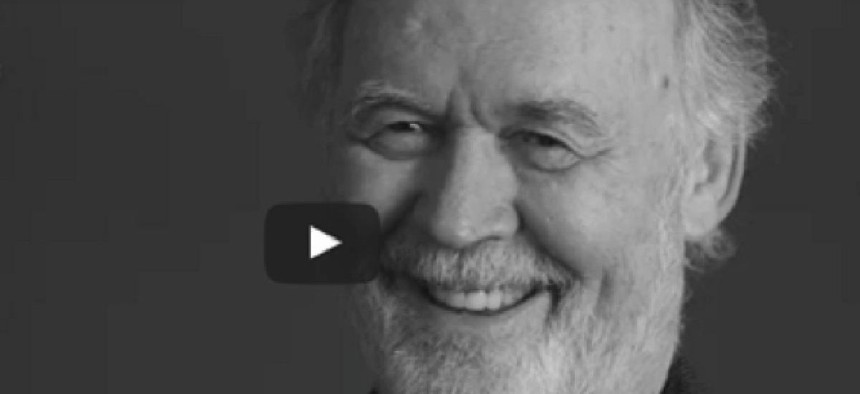Columbia Business School professor Ray Horton on the past, present and future of creating nonprofit leaders

Professor Ray Horton has seen plenty of change in his 46 years at Columbia Business School – but the enduring constant, he says, and the school’s best asset, remains its students.
“We have produced a huge number of talented, responsible individuals who made lasting contributions in the public, nonprofit and business spheres,” Horton says. “Good people who have gone into the world and done great things – sometimes by making a lot of money, sometimes by producing a lot of social value. We draw ambitious, wonderful students, and that will continue.”
Since joining the faculty in 1970, Horton himself has made a significant impact on the school and has a resume length that matches his longtime commitment: He is the Frank R. Lautenberg Professor of Ethics and Corporate Governance in the Management Division; the Bernstein Faculty Leader for the Sanford C. Bernstein & Co. Center for Leadership and Ethics; faculty director of Programs in Social Enterprise for the school’s Executive Education division; and founder of the Tamer Center for Social Enterprise. His goal, he says only half jokingly, is to reach 50 years at the school, his professional “home” – and then go out doing what he loves.
“I'd like to drop dead during my last lecture on Karl Marx. I think that would be a fitting way to go,” Horton says. “Die with your boots on. But I also reserve the right to change my mind.”
What’s the future of nonprofit leadership and social enterprise?
Inevitably, what we call social enterprise is going to get bigger and bigger. Not only in the United States but internationally. Basically, social enterprise refers to organizations that are using management principles to provide services that neither the private sector nor the public sector can provide. And the nature of the services that are going to be demanded over the next 25, 50 years is going to require more effort from the social sector, not less.
How do you think that change will present itself?
Student demand. And those students are going to be driven by changes in the external environment, especially the one factor we don’t spend much time addressing right now – climate change. That’s going to revolutionize the world and the faces of business, nonprofits and government over the next 50 years. How do you deal with the greatest crisis since the ice age as business leaders? And, unfortunately, we’re probably going to get to this issue too late. So it will become a crisis that will have to be managed, and that will be an increasingly important part of the curriculum of business schools generally – environmental crises management.
The problem with global warming is it doesn’t fall with even hands across the world; it falls disproportionately on certain regions. It will decimate coastal cities with a very high percentage of the world’s population and where a surprisingly high percentage of the world’s economic power is located. There’s going to be a shift of economic activity to the interior land away from coastal areas. If we got our act together, we could stop it, but we won't get our act together. So mitigating the effects is something we need to plan on at this stage of the game. And that’s an optimistic view of the future.
You had an interesting role in New York City in the 1970s. Can you talk about that experience and how it led to the Social Enterprise Program?
During the fiscal crisis in the ’70s, Mayor Abraham Beame asked me to run something called the Temporary Commission on City Finances, which I did for two years. It was a very hard job, and it taught me many things, one of which was that the City of New York's fiscal problems were really a result of its management failure. So, I pitched the idea to the dean's office to create the Public-Nonprofit Management Program. The dean thought it would be a good idea, and that program existed until 2000, when it morphed into the Social Enterprise Program.
The Social Enterprise Program has lots of legs. Part of it is devoted to the traditional public and nonprofit sector, part to social entrepreneurship, part to international development, and part of it incorporates social responsibility or corporate sustainability. Many of our students are initially interested in the public or nonprofit sector, while some of them go to Wall Street, make a lot of money, and become philanthropists and chairs of nonprofit boards. Today, about half of the students at Columbia Business School are involved with the Tamer Center for Social Enterprise in one way or another, and that is a good thing.
What do you think is the biggest takeaway for a Columbia Business School graduate?
When I first started at the School in 1970, the major thing that students got was a very traditional, good curriculum; they learned how to do things. Over the years, other things have taken priority, and now networking is just as important as curriculum. Our students spend a huge amount of time networking with their colleagues, with leaders on Wall Street, with leaders in the nonprofit sector. Contacts have become more important, and I suspect will continue to become more important. The other thing that’s driven that change is that we have become a dynamo with respect to faculty research. That’s the single biggest change I’ve seen at Columbia Business School in the 46 years I've been here. The degree of scholarship is much more advanced now than it was then.
Ray Horton is Faculty Director of Programs in Social Enterprise at Columbia Business School Executive Education and Professor of Ethics and Corporate Governance in the Management Division of Columbia Business School.
NEXT STORY: Quick takes: Labor